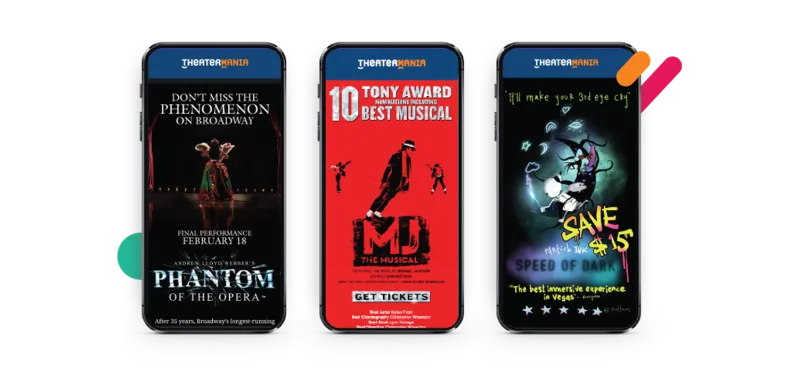5 Essential Elements of Effective Emails

With the number of emails sent per day projected to increase to 347.3 billion by 2023, the need to stand out has never been more important.
The primary purpose of every marketing email you send must be to provide value to the recipient. This value exchange builds trust and ultimately increases the performance of your email marketing campaigns.
Below are 5 things to consider when building your next email:
1. Subject Line: The first touchpoint a customer has when it comes to interacting with an email is the subject line.
Consequently, it’s important to make sure that the subject line grabs their attention from the massive pile of emails they receive daily in their inbox. There are a number of ways this can be done, including:
- Make it compelling: When you write a subject line, the objective is to entice the customer to open your emails.
- Add numbers and emojis: These are characters that stand out when viewing 10-15 emails together and help in grabbing the attention of the customer.
- Remember that Less is More: Long subject lines risk losing the interest of the reader, therefore it is important to keep them short, sweet and attention-grabbing.
Below are a few examples of subject lines that would stand out:
Hook tickets now to this ★★★★ feel-good musical
Did you hear? Our top sellers are all up to 40% off!
2. Be Concise: It’s imperative that you get to the point and quickly. The attention span of email readers is short, so your copy should be too. Choose your words wisely and focus on language that is specific, thoughtful and useful.
Does the email reader have all of the information they need to buy tickets (or the motivation to click through)? Answering the big questions – who, what, where, when, etc. – can be enough to educate and inspire them and earn the click.
It’s also important to convey the information using a balance of text and images, especially for those consumers that are more visual receivers of information.
3. Keep your Email On-Brand: When building your email, it is important to make sure that the customer can identify that it is YOUR email.
The branded experience should include design elements that are unique to your organization, including colors, photos, and voice. It’s especially important to ensure that the colors and other design elements connect to the other marketing materials such as the website, social media and brochures so that the experience is connected throughout the entire journey – from discovery to purchase.
You should also include your logo with direct links to your website and social media accounts. This allows the customer to interact with your brand on different platforms and contributes towards increasing conversions.
4. Call-To-Action button: By including a single CTA, you can witness an increase in clicks by up to 371%.
The goal of a CTA is to bring in those conversions. Here are a few things to remember when creating a CTA:
- Make it obvious!: It’s important that there is only one CTA in an email. The customer needs to know that if they need more information or proceed to the next step, there is only one path. This makes things more simple for not only the customer but also for the sender to track email performance.
- Keep it short, direct, and action-oriented: CTAs don’t need to be fancy, they need to work. Keeping it short and simple is the best way to help the customer know where they need to go and what they need to do.
- Design: Make sure the CTAs don’t overpower the email by keeping them the appropriate size to best blend in with the email design. You want it to stand out, but not obnoxiously.
Below are a few examples of good CTAs and bad CTAs:
5. Responsive Design: 46% of emails are opened on mobile devices, according to a study. Emails must be optimized for mobile devices or you run the risk of losing your subscribers.
This is pretty easy to do as most email building platforms allow you to preview what the emails look like when viewing them on a desktop or mobile device. Some even go a step further to show you what they would look like on different browsers and devices such as iPads, iPhone and Androids.
The main objective is to make sure that the customer can read and view your email at any time with ease (and without needing to pinch or drag). Some considerations for creating a mobile-friendly/responsive email are:
- Ensure that there is sufficient spacing between the content blocks, headlines, body copy and other elements of the emails.
- The CTA buttons are large enough to be clicked by thumbs.
- The unsubscribe button is available in footer of the email.
- The email is clearly visible in both light and dark modes.
- The images are not squished or cut off.
After you build your email and hit send, it’s time to capture the results and create an even more effective one for your next campaign.




